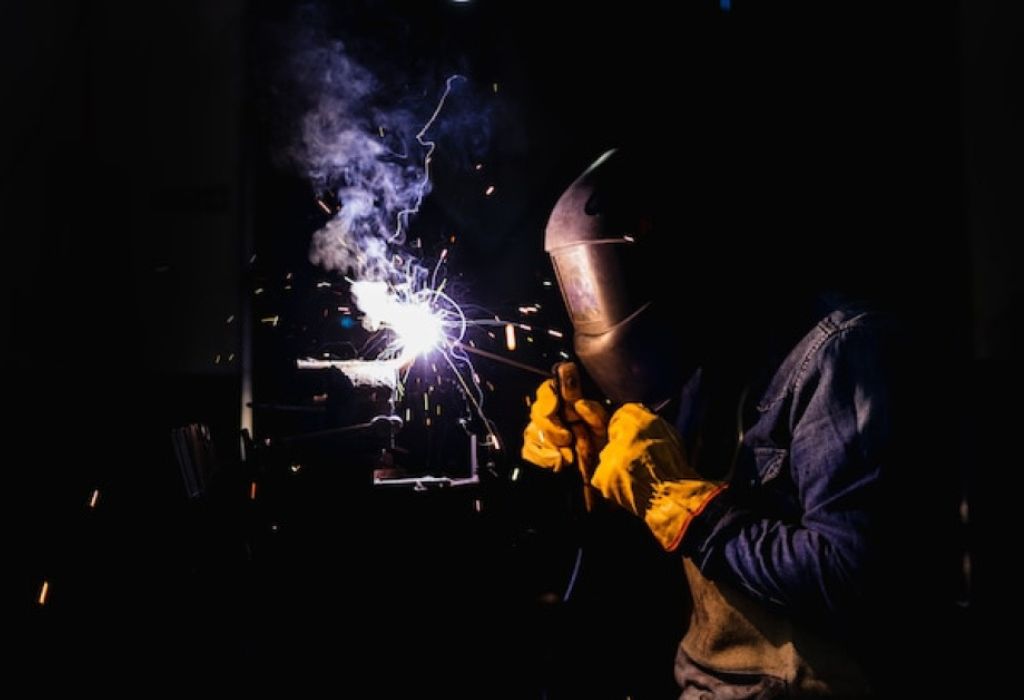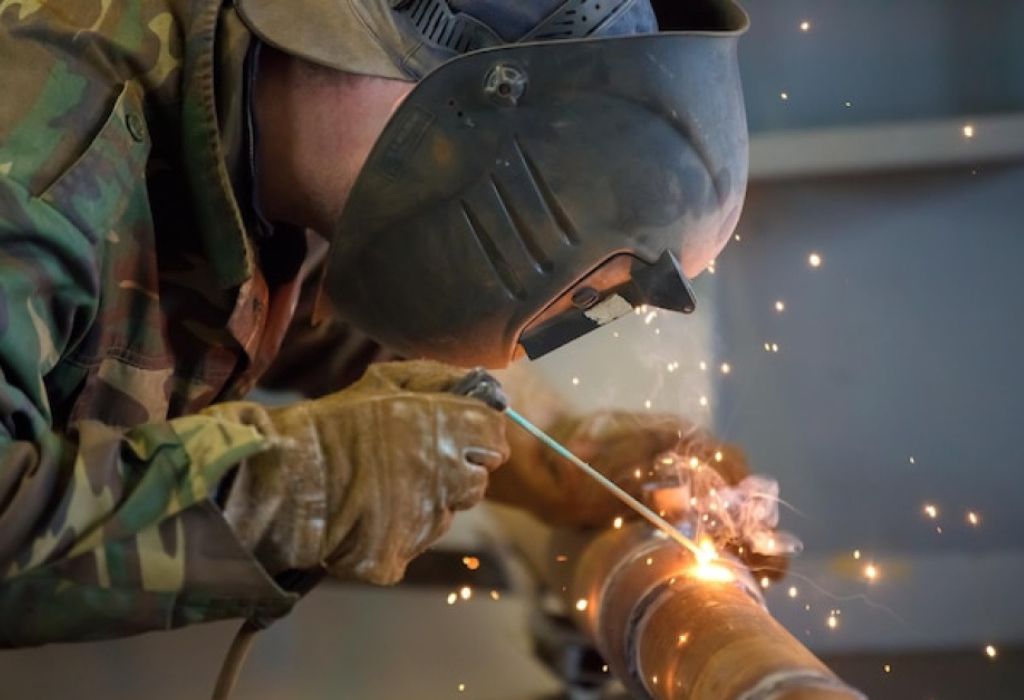A convoy vehicle rumbles back from a mission with critical damage. In the field shop, a welding team sparks their torches, restoring the machine so it can roll again within hours.
These welders are not just tradespeople; they are the backbone of mission readiness, keeping equipment and structures operational under intense conditions.
It raises a vital question—how do you become a military support welder trusted with such responsibility?
Many people see welding as an industrial or construction trade, but in the military it carries unique weight.
Support welders repair tanks, fabricate aircraft parts, and maintain ship structures where downtime could impact lives.
Yet the path to this role isn’t always clear. Do you enlist and learn directly through the Army, Navy, or Air Force? Or do you pursue civilian credentials and apply for defense contracts and depot positions?
The demand is strong. The American Welding Society reports that the U.S. could face a shortage of nearly 360,000 welding professionals by 2027 AWS.
At the same time, Department of Defense COOL programs show how military training aligns with industry-recognized certifications DoD COOL.
This means skills gained in uniform or as a defense contractor can also fuel long-term civilian careers.
Understanding the training, certifications, and requirements is essential for anyone considering this path.
Whether you are motivated by stable pay and benefits, a desire to support missions directly, or an interest in using GI Bill opportunities for further credentials, there is a clear roadmap. This guide explains the steps, qualifications, and choices so you know exactly what it takes to become a military support welder.
What Is a Military Support Welder?

A military support welder is a skilled professional responsible for repairing, fabricating, and maintaining equipment critical to defense operations.
These welders may serve directly in the armed forces or work as civilian contractors supporting military projects.
Their work includes structural welding on vehicles, ships, aircraft, and field equipment. In many cases, welders must adapt to challenging environments, from mobile repair units to shipyards and overseas bases.
The role is not limited to manual skills. Support welders are trained in metallurgy, blueprint reading, and safety standards specific to military applications.
They often hold certifications that align with both Department of Defense requirements and industry-recognized standards.
Do military welders only serve in combat zones?
No, they also work in bases, depots, and shipyards worldwide.
Are military support welders the same as civilian welders?
They share core skills but military welders focus on mission-critical equipment and field conditions.
What industries use military-trained welders?
Automotive, aerospace, shipbuilding, and construction industries all recruit them.
Is this role only for enlisted personnel?
No, civilian contractors also fill support welder positions.
Why is welding critical for the military?
Because broken equipment can ground missions, welding keeps operations running without costly delays.
Training and Education Pathways
Becoming a military support welder usually starts with either enlistment in the armed forces or civilian technical training. Both paths require hands-on welding education and certifications that prove readiness for defense-level projects.
For enlisted personnel, military training schools provide structured courses in Shielded Metal Arc Welding (SMAW), Gas Tungsten Arc Welding (GTAW), and other processes. These programs often align with American Welding Society (AWS) or NCCER certifications, making skills transferable to civilian careers.
Civilian candidates often attend trade schools or community colleges that offer welding diplomas or associate degrees. Many then apply directly to defense contractors, shipyards, or Department of Defense facilities where welding expertise is in constant demand.
Additional education includes blueprint reading, metallurgy, and fabrication design, which are emphasized in both military and civilian programs. Employers also value OSHA and safety-related training because of the high-risk environments welders face.
Do you need a degree to be a military support welder?
No, but vocational or trade school welding credentials are highly valuable.
Does the military train welders from scratch?
Yes, enlistees can learn welding directly through military technical schools.
Can civilian welders apply to military contractor jobs?
Yes, defense contractors actively recruit certified civilian welders.
Which certifications matter most?
AWS certifications like D1.1 for structural welding are widely recognized.
Is math important in training?
Yes, basic geometry and measurement are essential for precision fabrication.
Certifications and Requirements
Certifications are a cornerstone of becoming a military support welder. They prove competence and ensure welders can meet strict military specifications.
The most common certifications come from the American Welding Society (AWS). Structural codes like AWS D1.1 or specialized pipeline and aerospace certifications are often required for military and contractor projects.
The Department of Defense also recognizes industry-aligned credentials through programs like Army COOL and Navy COOL. These pathways allow service members to earn certifications while still in uniform, often funded by the military.
Physical fitness is another requirement. Military welders may need to work in confined spaces, at heights, or in extreme weather, demanding stamina and health clearances.
Do all military support welders need AWS certification?
Yes, AWS certifications are industry standards recognized by the military.
What physical requirements exist?
Good vision, stamina, and ability to work in tight or hazardous spaces.
Can veterans use GI Bill benefits for welding certifications?
Yes, GI Bill funds can cover tuition and testing fees for AWS certifications.
Are background checks required?
Yes, many positions require security clearance due to defense-related work.
Does every branch of the military need welders?
Yes, the Army, Navy, Air Force, and Marines all employ support welders.
Career Paths: Enlisted vs Civilian
There are two main paths into military welding: enlisting as a soldier, sailor, or airman, or working as a civilian contractor. Each has unique benefits and challenges.
Enlisted welders receive technical training directly from their branch of service. They are deployed wherever needed, from bases at home to overseas operations. Their pay includes military benefits such as housing allowances, healthcare, and retirement contributions.
Civilian welders work for defense contractors, shipyards, or direct-hire government facilities. They perform similar duties but remain civilians, often with competitive salaries and the option to work closer to home.
Veterans often transition into civilian welding careers, using their military-acquired skills and certifications. This makes welding a strong long-term option for service members planning post-military employment.
Which pays more: military or civilian welding?
Civilian roles may pay more hourly, but enlisted welders receive extensive benefits.
Can civilians work alongside military personnel?
Yes, contractors frequently collaborate with enlisted welding teams.
Do enlisted welders get deployed overseas?
Yes, many are stationed internationally as part of support operations.
Is contractor work more flexible?
Yes, contractors often choose projects and locations that fit their lifestyle.
Can enlisted welders later become contractors?
Yes, many transition to civilian defense jobs after active service.
Skills Needed to Succeed
Military support welding requires more than technical ability. It demands adaptability, problem-solving, and the ability to perform under pressure.
Technical skills include SMAW, MIG, TIG, and flux-cored arc welding. Welders must also master cutting methods like oxy-fuel and plasma cutting for quick repairs.
Soft skills such as teamwork, discipline, and communication are vital. Welders often coordinate with mechanics, engineers, and commanders to ensure mission success.
Problem-solving is especially important. Military welders frequently work in unpredictable conditions and must innovate solutions with limited resources.
What welding processes are most important?
SMAW, GTAW, and MIG are core processes for military applications.
Are soft skills really necessary?
Yes, welders must coordinate with teams and follow strict protocols.
Do military welders fabricate from scratch?
Yes, they often build new parts when replacements are unavailable.
How important is safety training?
Critical—military welders must follow OSHA and DoD safety guidelines.
Do welders need leadership skills?
Yes, senior welders often train and supervise junior team members.
Job Outlook and Salary

Military support welding offers competitive salaries and stable job prospects. The U.S. Bureau of Labor Statistics reports median pay for welders at $48,940 annually in 2023 BLS.
Enlisted welders earn according to rank and time in service, with additional allowances for housing, food, and deployment. Civilian defense welders often earn higher base salaries, with some specialized contractors making $60,000–$80,000 annually depending on experience.
The job outlook is strong, with both military and civilian defense industries reporting ongoing demand. Shortages in skilled trades nationwide increase the value of welding expertise.
How much does a new enlisted welder earn?
Base pay starts around $25,000–$30,000 annually, plus allowances.
Do contractors earn more than enlisted?
Yes, contractors often earn higher wages, though without military benefits.
Are there bonuses for military welders?
Yes, some branches offer reenlistment bonuses for technical roles.
Is there long-term career security?
Yes, both defense and civilian industries have consistent welding needs.
Which field pays the highest?
Shipyard and aerospace military contractors often pay top wages.
Conclusion
Becoming a military support welder is a pathway to a respected, in-demand career. It combines technical skill with mission-focused service, making it one of the most impactful roles in both defense and industry.
The journey can start by enlisting and receiving training through the armed forces or by gaining certifications in a civilian setting and applying to defense contractors. Along the way, welders gain certifications, field experience, and discipline that transfer easily into long-term careers.
If you are motivated by steady work, benefits, and the chance to directly support national defense, welding offers a fulfilling path. Whether in uniform or as a civilian contractor, your skills can keep missions moving, equipment running, and people safe.

I’m Darrell Julian, the founder, lead writer, and hands-on welding enthusiast behind ArcWeldingPro.com. With more than 15 years of real-world welding experience, I created this platform to share what I’ve learned in the field, in the shop, and in the heat of the arc.


